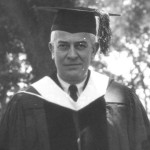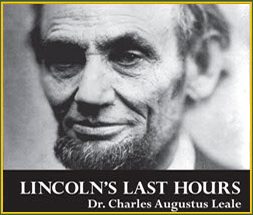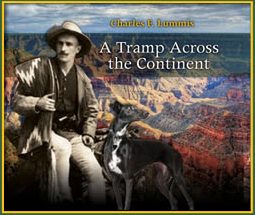Subscribe now to automatically receive our Listen2Read blog:
Listen to Samples From the Audiobooks:
Recent Posts
HOW TITUSVILLE PENNSYLVANIA SAVED THE WHALES
CHRISTMAS ON STORMY SOUTH AFRICAN SEAS WHERE THE WORLD IS STILL FLAT
THE DOOMED MEN OF THE COLORADO RIVER
THE MORNING WHEN PRESIDENT LINCOLN DIED
WHAT HAPPENED TO AMELIA EARHART’S AIRPLANE ‘THE FRIENDSHIP”?
Additional Listen2Read Titles
-
Unabridged
Narrative of the Most Extraordinary and Distressing Shipwreck of the Whale Ship Essex
$14.95 – $29.95 Preview
THE DOOMED WHALESHIP ESSEX AND THE DOOMED “MOBY DICK”

Ron Howard has just directed a new major motion picture based on the book ” In The Heart of The Sea,” by Nathaniel Philbrick. It is a retelling of the famous sea tragedy of the Whaleship Essex, in 1820, when a giant 80-foot whale became angry at the whaleship and attacked it, bashing in the side of the ship below the water line. The ship immediately began to sink, 1500 miles off the west coast of Chile. Every member of the 20-man crew was in danger of losing his life.

The crew had only three whaleboats, which were designed for the harpooning and butchering of the whales and not for an actual sea journey. It was in these boats, after the sinking of the ship, the crew would have to survive until they reached some kind of land or were spotted by another ship on the high seas.
But where to go – which direction to take? A series of bad decisions led to a disastrous and treacherous journey, and, in the final days, the survival of the last of the crew depended on that most dreaded of human acts, cannibalism.

Most of the crew perished. However, one of the survivors, Owen Chase, the first mate of the Essex, wrote an account of the disaster and the struggle for survival. He called his written account of this terrible time, “Narrative of the Most Extraordinary And Distressing Shipwreck of the Whaleship Essex.”
A few years ago, author Nathaniel Philbrick wrote another telling of the story, using Chase’s account and a second account written by the cabin boy, Thomas Nickerson. The addition of Philbrick’s considerable and impressive research resulted in a new book. “In The Heart of the Sea.” It is this fascinating book upon which the motion picture is based.

The angry whale that doomed the whaleship Essex was reimagined into another whale in the famous novel “Moby Dick,” by Herman Melville.
Melville first heard the story of the Essex from Owen Chase’s son 20 years after the tragedy. By chance, two whaleboats met in the Pacific Ocean off the Coast of Chile, close to the spot, where the Essex perished. Chase’s son was part of the crew of one whaleship and Herman Melville was a crewmember on the other. At some point, Chase’s son loaned Melville a copy of his father’s book.

Melville was impressed with the concept of an angry, revengeful whale and eleven years later wrote “Moby Dick.”
While today most people are familiar with the story of Captain Ahab and the white whale, when Melville first published Moby Dick in 1851, the book was almost as doomed as the Essex. Instead of a destructive whale attacking, Melville suffered from a destructive publisher.
Melville sent the manuscript to London Publisher Richard Bentley, to gain a British copyright, believing the book would be published as he wrote it and expecting a reasonable amount of money for the novel. He was to be greatly disappointed.

Richard Bentley was a publisher with a mind of his own. He had been in the business a long time, publishing works of very popular authors such as Charles Dickens, and Edgar Allen Poe. He even published his own magazine.
In 1851, Bentley was experiencing some financial difficulties and, perhaps, he grew timid. He read Melville’s novel and felt it contained passages too strong for those Victorian times. He edited the manuscript without consulting Melville in order to make it more tasteful for sensitive Victorians.
Further, “Moby Dick” is told in the first person by a character named Ishmael. At the end of the book, it appears that everyone dies. In a short Epilogue, however, Melville has Ishmael describe how he barely escaped death himself and how he was the only survivor of the story.

For some unknown reason, Publisher Bentley, without consulting Melville, eliminated the Epilogue entirely, so that the London literary critics could reasonably wonder how a first person story could be told if everyone, including the first person narrator, was dead.
With the unauthorized cuts and revisions, “Moby Dick” was released and received very poor reviews. Reviewers commented on the superior quality of Melville’s writing, but were mostly negative about the story itself.
Melville’s American publisher, Harper Brothers, published the book from Melville’s original version without the tampering of Bentley. Unfortunately, the first reviews printed by the American newspapers were the English reviews of the English version.

Newspapers would re-print these free English reviews to avoid hiring their own reviewers and thus save money. And so, unfortunately, the first American reviews of “Moby Dick” were the negative English reviews. The result was a financial and emotional disaster for Melville. With the poor reception of his next novel, “Pierre,” his novel writing career ended.
But there was even more bad news for Melville. Two years after the American version was published by Harper Brothers, a fire at the Harper Brothers warehouse burned up all of the unsold copies of “Moby Dick” as well as his other novels, so no new copies were available to the public. Harper Brothers decided not to reprint his less successful books, including “Moby Dick.”
Herman Melville continued writing articles and began writing poetry. “Moby Dick” was soon forgotten by the public, doomed by very bad luck. Herman Melville died in in 1891 at the age of 77, without the fame his reputation enjoys today.

Here, the Herman Melville story takes on a strange twist of fate. Twenty-eight years after Melville’s s death, the Pulitzer Prize winning biographer Carl Van Doren wrote a history of the American Novel that renewed interest in Melville’s writing and in “Moby Dick.”

With this reawakened interest in Melville, Van Doren encouraged a literary scholar named Raymond Weaver to write about Melville. Weaver decided to visit Melville’s granddaughter to look over whatever Melville papers might be in her possession.
Among all the Melville papers he discovered an unpolished manuscript for an unpublished new novel titled “Billy Budd.” That discovery brought to light Melville’s final work, “Billy Budd”, a work, published posthumously, that has now taken its place among the great works of American fiction. It has since been adapted as a movie, a play a ballet and and opera (recently performed by the LA Opera).


Last year, I recorded the original story of the Essex, published in 1821 by Owen Chase, first mate of the doomed Essex, as an audiobook for Listen To Read audiobook publishing’s “American Adventure Library.” Recording the narrative was an emotional experience for me, because performing the words of a man who lived through such a life changing event, and hearing them spoken aloud, brought me very close to Owen Chase’s emotional experience:
“Gracious God, what a picture of distress and suffering now presented itself to my imagination! The crew of the ship – consisting of twenty human souls – were saved. All that remained to conduct these twenty beings through the stormy terrors of the ocean perhaps many thousands of miles, with three light boats. …. How many long and watchful nights, thought I, are to be passed. How many tedious days of partial starvation are to be endured before the least relief or mitigation of our sufferings can be reasonably anticipated?”
You can see some historical depictions of the Essex disaster and hear some samples of the narrative of Owen Chase’s original “Narrative of the Most Extraordinary And Distressing Shipwreck Of the Whaleship Essex” at the the following link:
https://listen2read.com/narrative-of-the-most-extraordinary-and-distressing-shipwreck-of-the-whale-ship-essex/
As for the motion picture “In The Heart of the Sea,” as you can imagine, I am really looking forward to seeing it.
Andre Stojka
Publisher
Listen2Read
©2015 Listen2Read.com
PS: I’ve been traveling in China during the past few weeks, but I was happy to learn that National Public Radio used portions of my narrative of “Through the Brazilian Wilderness,” by Theodore Roosevelt, to describe the dense Brazilian jungle for their feature story on Fires on the Amazon for the NPR program “All Things Considered.”
Additional Listen2Read Titles
-
Unabridged
Narrative of the Most Extraordinary and Distressing Shipwreck of the Whale Ship Essex
$14.95 – $29.95 Preview



















